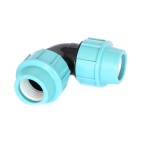Driven by booming domestic demand
2020年10月28日 日常China has long been seen as a nation with upvc foot valve(https://www.chinavalvefittings.com/product/valve-series/foot-valve/) a massivelabor force available at world beating rates, but might that be changing?Factories in export-oriented Southern China are facing labor shortages for plastic mold and plastic molding industry,asmigrant laborers return home and realize that the grass is just as green.Driven by booming domestic demand, jobs are easier to come by and though thewages may be lower, the cost of living is a fraction of what it is in the city.With skilled staff at a premium, one European machine builder with a manufacturingoperation in China recently told Plastics Today that it now is almost as cheapto find a decent injection machine operator in Malaysia - at a shade over $210per month - as it is in Shanghai at rates ranging from $235-290 per month.
Thatcomes as a surprise given that outside of the city/state of Singapore, Malaysiahas the highest labor costs among any Southeast Asian nation.So will we ever see a mass exodus of manufacturingfrom China to lower cost locales like Indonesia and Vietnam? Most likely the answeris a resounding "No." For one, domestic demand in China for allmanner of commodities is growing and it makes sense to serve the local marketwith local production. Second, companies probably often over-estimated the costadvantage of Chinese labor, and will start looking at ways to replace labor,just as they have done in higher labor-cost regions.?Sure, labor costs were a fraction in China of whatthey are in the West, but they might only represent a small portion of overallcosts for some processing operations, and productivity might be a fraction ofwhat it was at the processor’s home base. These savings could be wiped out byhigher logistics and electricity costs, for example. Thirdly, plasticsprocessors are realizing more and more that no matter how low labor costs mightbe, removing the human factor from the production flow generally leads tohigher quality products.
After all, robotic take-out guarantees constant cycletimes and no fingerprints or scratches on the products.Prompted by higher labor costs and worker shortages,Chinese manufacturers of such commodity products as cigarette lighters arereportedly now turning to automation and finding that, if coupled with theright quality of injection machine, and then productivity can be significantlyenhanced. At the higher end of the scale, foreign-owned or -managed medicalmolders in China already boast the same level of automation as back home.
Thatcomes as a surprise given that outside of the city/state of Singapore, Malaysiahas the highest labor costs among any Southeast Asian nation.So will we ever see a mass exodus of manufacturingfrom China to lower cost locales like Indonesia and Vietnam? Most likely the answeris a resounding "No." For one, domestic demand in China for allmanner of commodities is growing and it makes sense to serve the local marketwith local production. Second, companies probably often over-estimated the costadvantage of Chinese labor, and will start looking at ways to replace labor,just as they have done in higher labor-cost regions.?Sure, labor costs were a fraction in China of whatthey are in the West, but they might only represent a small portion of overallcosts for some processing operations, and productivity might be a fraction ofwhat it was at the processor’s home base. These savings could be wiped out byhigher logistics and electricity costs, for example. Thirdly, plasticsprocessors are realizing more and more that no matter how low labor costs mightbe, removing the human factor from the production flow generally leads tohigher quality products.
After all, robotic take-out guarantees constant cycletimes and no fingerprints or scratches on the products.Prompted by higher labor costs and worker shortages,Chinese manufacturers of such commodity products as cigarette lighters arereportedly now turning to automation and finding that, if coupled with theright quality of injection machine, and then productivity can be significantlyenhanced. At the higher end of the scale, foreign-owned or -managed medicalmolders in China already boast the same level of automation as back home.

コメント